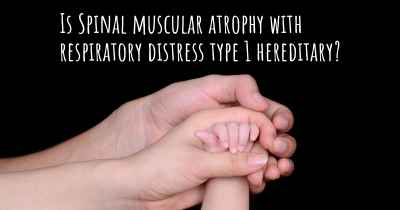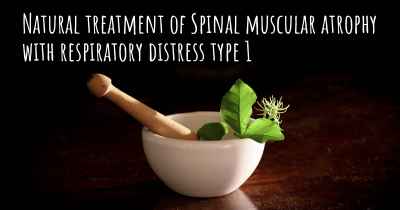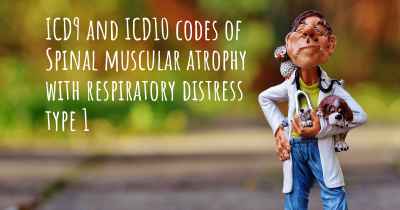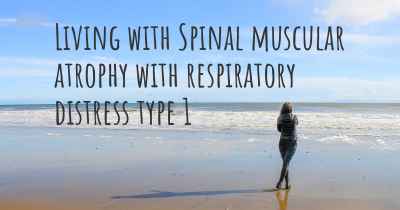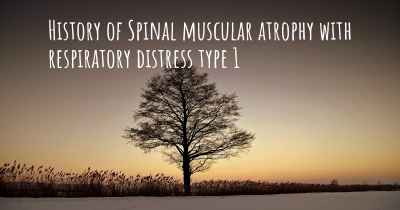Spinal muscular atrophy with respiratory distress type 1 diet. Is there a diet which improves the quality of life of people with Spinal muscular atrophy with respiratory distress type 1?
Are you aware of a diet that can improve the quality of life of people with Spinal muscular atrophy with respiratory distress type 1? Is there a diet that is suggested to avoid when having Spinal muscular atrophy with respiratory distress type 1? See if there is a diet that can improve the quality of life of people with Spinal muscular atrophy with respiratory distress type 1, recommended and to avoid food when having Spinal muscular atrophy with respiratory distress type 1

Improving Quality of Life for Individuals with Spinal Muscular Atrophy with Respiratory Distress Type 1
Spinal Muscular Atrophy with Respiratory Distress Type 1 (SMARD1) is a rare genetic disorder that affects the muscles involved in breathing and movement. It is characterized by progressive muscle weakness, respiratory distress, and can significantly impact an individual's quality of life. While there is no specific diet that can cure or reverse the condition, a well-balanced and nutritious diet can play a crucial role in supporting overall health and well-being.
The Importance of Nutrition
Individuals with SMARD1 often experience difficulties with swallowing and feeding due to muscle weakness. This can lead to inadequate nutrition and potential weight loss. Therefore, it is essential to focus on providing adequate nutrition to maintain energy levels, support growth, and optimize overall health.
Consulting with a Healthcare Professional
Since the nutritional needs of individuals with SMARD1 can vary, it is crucial to consult with a healthcare professional, such as a registered dietitian or a nutritionist, who can provide personalized guidance based on the individual's specific needs and medical condition. They can assess the individual's nutritional status, identify any deficiencies, and develop a tailored diet plan.
Key Nutritional Considerations
While the specific dietary recommendations may vary, here are some key nutritional considerations for individuals with SMARD1:
1. Adequate Caloric Intake:
Individuals with SMARD1 may have increased energy needs due to the extra effort required for breathing and movement. Ensuring an adequate caloric intake is essential to meet these increased energy demands.
2. Balanced Macronutrients:
A well-balanced diet that includes carbohydrates, proteins, and fats is important for overall health. Carbohydrates provide energy, proteins support muscle strength and repair, and healthy fats are essential for various bodily functions.
3. Nutrient-Dense Foods:
Choosing nutrient-dense foods is crucial to maximize nutrient intake. These include fruits, vegetables, whole grains, lean proteins, and healthy fats. Incorporating a variety of colorful fruits and vegetables can provide essential vitamins, minerals, and antioxidants.
4. Adequate Protein:
Protein is essential for muscle strength and repair. Including good sources of protein such as lean meats, poultry, fish, eggs, dairy products, legumes, and tofu can help support muscle health.
5. Fluid Intake:
Staying hydrated is important for everyone, including individuals with SMARD1. Drinking enough fluids can help thin mucus secretions, facilitate swallowing, and prevent dehydration.
6. Texture Modifications:
Individuals with swallowing difficulties may benefit from texture modifications in their diet. This can involve altering the consistency of foods and liquids to make them easier to swallow. Working with a speech-language pathologist or a swallowing therapist can provide guidance on appropriate modifications.
7. Supplementation:
In some cases, nutritional supplements may be recommended to address specific nutrient deficiencies or to ensure adequate intake. This should be done under the guidance of a healthcare professional.
Conclusion
While there is no specific diet that can cure or reverse Spinal Muscular Atrophy with Respiratory Distress Type 1 (SMARD1), a well-balanced and nutritious diet can help support overall health and improve the quality of life for individuals with the condition. Consulting with a healthcare professional and following their personalized recommendations is crucial to ensure adequate nutrition and address any specific needs or challenges associated with SMARD1.


